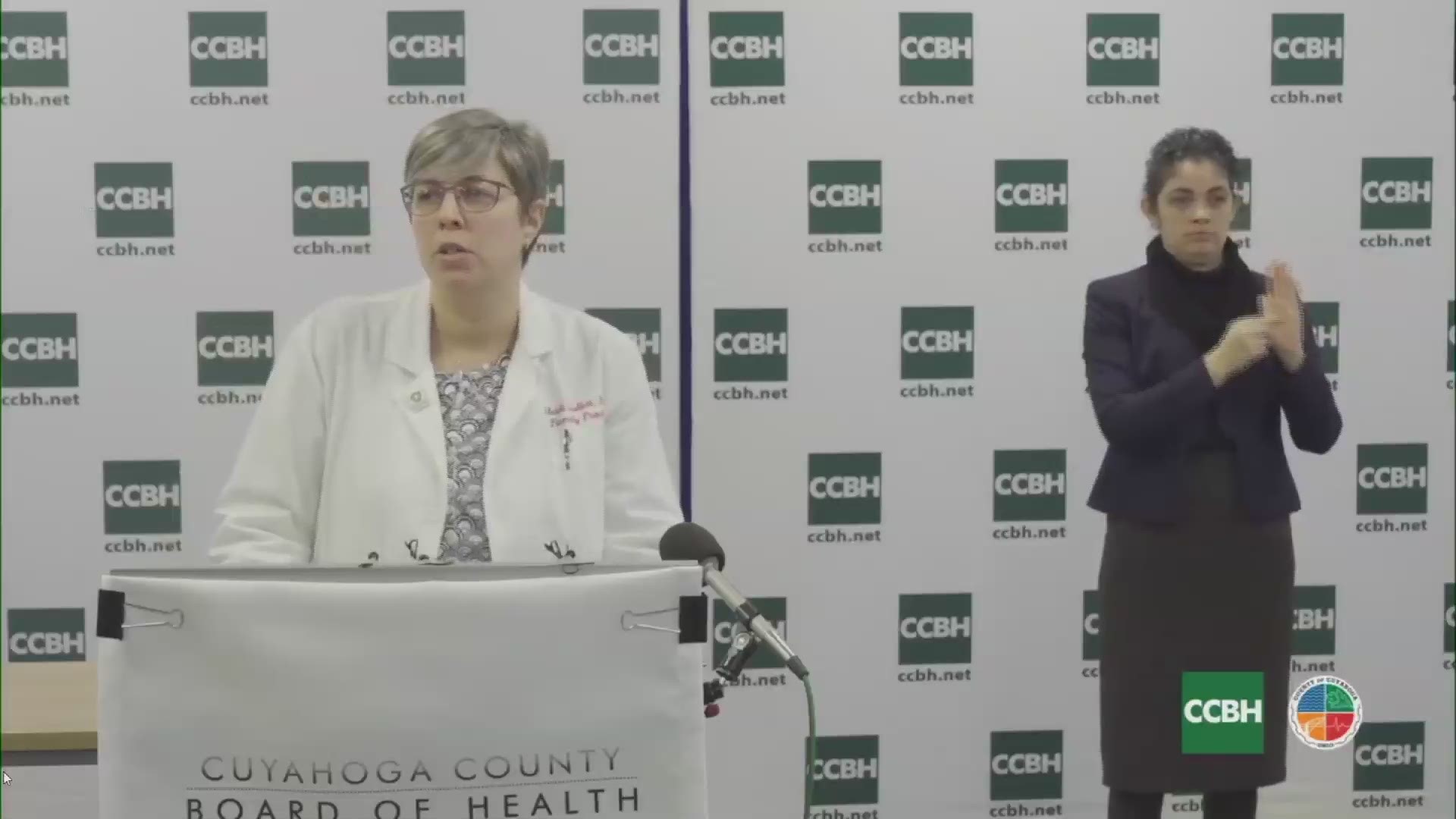COLUMBUS, Ohio — When Ohio Gov. Mike DeWine announced last week plans to start reopening the state on May 1, he didn't offer many details.
During an appearance on NBC's Meet the Press Sunday morning, DeWine offered some new insight into what Ohioans can expect.
"We’re going to do what we think is right -- what I think is right -- and that is try to open this economy, but do it very, very carefully so we don’t get a lot of people killed. But we have to come back, and that’s what we’re aiming to do beginning on May 1. Frankly, it’s consistent, it’s very, very consistent with the plan, the very thoughtful plan, that the President has laid out.”
NOTE: Gov. DeWine has offered even more insight into Ohio's reopening plan, which we explore in-depth HERE.
President Trump's plan works through three different phases, which you can read in full HERE. Below is an outline of the Trump administration's guidelines, which may offer a hint of what Ohioans can expect since DeWine says his plan is "very consistent" with this one:
PHASE 1
INDIVIDUALS:
- ALL VULNERABLE INDIVIDUALS should continue to shelter in place. Members of households with vulnerable residents should be aware that by returning to work or other environments where distancing is not practical, they could carry the virus back home. Precautions should be taken to isolate from vulnerable residents.
- All individuals, WHEN IN PUBLIC (e.g., parks, outdoor recreation areas, shopping areas), should maximize physical distance from others. Social settings of more than 10 people, where appropriate distancing may not be practical, should be avoided unless precautionary measures are observed.
- Avoid SOCIALIZING in groups of more than 10 people in circumstances that do not readily allow for appropriate physical distancing (e.g., receptions, trade shows)
- MINIMIZE NON-ESSENTIAL TRAVEL and adhere to CDC guidelines regarding isolation following travel.
EMPLOYERS:
- Continue to ENCOURAGE TELEWORK, whenever possible and feasible with business operations.
- If possible, RETURN TO WORK IN PHASES.
- Close COMMON AREAS where personnel are likely to congregate and interact, or enforce strict social distancing protocols.
- Minimize NON-ESSENTIAL TRAVEL and adhere to CDC guidelines regarding isolation following travel.
- Strongly consider SPECIAL ACCOMMODATIONS for personnel who are members of a VULNERABLE POPULATION.
SPECIFIC TYPES OF EMPLOYERS:
- SCHOOLS AND ORGANIZED YOUTH ACTIVITIES (e.g., daycare, camp) that are currently closed should remain closed.
- VISITS TO SENIOR LIVING FACILITIES AND HOSPITALS should be prohibited. Those who do interact with residents and patients must adhere to strict protocols regarding hygiene.
- LARGE VENUES (e.g., sit-down dining, movie theaters, sporting venues, places of worship) can operate under strict physical distancing protocols.
- ELECTIVE SURGERIES can resume, as clinically appropriate, on an outpatient basis at facilities that adhere to CMS guidelines.
- GYMS can open if they adhere to strict physical distancing and sanitation protocols.
- BARS should remain closed.
PHASE 2
INDIVIDUALS:
- ALL VULNERABLE INDIVIDUALS should continue to shelter in place. Members of households with vulnerable residents should be aware that by returning to work or other environments where distancing is not practical, they could carry the virus back home. Precautions should be taken to isolate from vulnerable residents.
- All individuals, WHEN IN PUBLIC (e.g., parks, outdoor recreation areas, shopping areas), should maximize physical distance from others. Social settings of more than 50 people, where appropriate distancing may not be practical, should be avoided unless precautionary measures are observed.
- NON-ESSENTIAL TRAVEL can resume.
EMPLOYERS:
- Continue to ENCOURAGE TELEWORK, whenever possible and feasible with business operations.
- Close COMMON AREAS where personnel are likely to congregate and interact, or enforce moderate social distancing protocols.
- Strongly consider SPECIAL ACCOMMODATIONS for personnel who are members of a VULNERABLE POPULATION.
SPECIFIC TYPES OF EMPLOYERS:
- SCHOOLS AND ORGANIZED YOUTH ACTIVITIES (e.g., daycare, camp) can reopen.
- VISITS TO SENIOR CARE FACILITIES AND HOSPITALS should be prohibited. Those who do interact with residents and patients must adhere to strict protocols regarding hygiene.
- LARGE VENUES (e.g., sit-down dining, movie theaters, sporting venues, places of worship) can operate under moderate physical distancing protocols.
- ELECTIVE SURGERIES can resume, as clinically appropriate, on an outpatient and in-patient basis at facilities that adhere to CMS guidelines.
- GYMS can remain open if they adhere to strict physical distancing and sanitation protocols.
- BARS may operate with diminished standing-room occupancy, where applicable and appropriate.
PHASE 3
INDIVIDUALS:
- VULNERABLE INDIVIDUALS can resume public interactions, but should practice physical distancing, minimizing exposure to social settings where distancing may not be practical, unless precautionary measures are observed.
- LOW-RISK POPULATIONS should consider minimizing time spent in crowded environments.
EMPLOYERS:
- Resume UNRESTRICTED STAFFING of worksites.
SPECIFIC TYPES OF EMPLOYERS:
- VISITS TO SENIOR CARE FACILITIES AND HOSPITALS can resume. Those who interact with residents and patients must be diligent regarding hygiene.
- LARGE VENUES (e.g., sit-down dining, movie theaters, sporting venues, places of worship) can operate under limited physical distancing protocols.
- GYMS can remain open if they adhere to standard sanitation protocols.
- BARS may operate with increased standing room occupancy, where applicable.
"We cannot look at May 1 as a date that everything will be back to normal," DeWine tweeted Tuesday afternoon. "We want to make #Ohio's comeback strong, but we also want to make #Ohio's comeback safe. #InThisTogetherOhio."
DeWine has also announced all K-12 schools throughout Ohio will remain closed for the rest of the academic year with students continuing their education through distance learning.
MORE COVERAGE:
- RELATED: Ohio to start reopening process May 1, but what about schools? Gov. Mike DeWine to announce K-12 plan this week
- RELATED: Is May 1 too early to start reopening Ohio? Here's what health experts in Cuyahoga County are saying
- RELATED: Protesters rally against state closures at Ohio Statehouse amid coronavirus pandemic
- RELATED: Coronavirus & Ohio: The latest number of confirmed cases
- RELATED: Here's how coronavirus cases have grown in Ohio each day: Timeline

